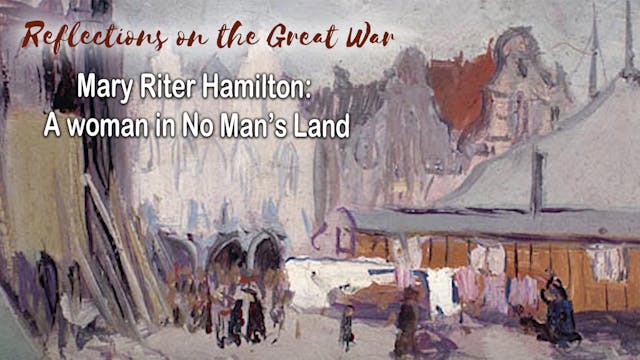Where the Poppies Grow - The Lakehead at War
Free Viewing for Remembrance Day
•
29m
Where the Poppies Grow is a short docu-drama about one soldier during the Great War. Alfred Saxberg was a first generation Finnish Canadian who signed up at the beginning of the war and was fortunate to return home in 1919. When the Great War ended In November 1918, the people of the Lakehead could take pride in the contributions they had made. Over 6,200 people enlisted either as volunteers or conscripts. At home, the community supported the war by raising money to assist soldiers’ wives, children, and other dependants. There were also campaigns to help finance the purchase of military equipment and to send personal items to the soldiers overseas. By the end of the conflict, approximately 800 people from the Lakehead were killed overseas or died of illness due to their war service. Thousands more were wounded in body and mind. Where the Poppies Grow is a docu-drama that looks at the sacrifices made by people from the Lakehead to secure victory in the war.
As part of this project we have also produced a series of vignettes called "Reflections on the Great War" that help explain aspects of the film and a short “making of” video where you can get a behind the scenes look at the production. Everything is available on ResearchTV.ca
Director: Ron Harpelle
Producer: Ron Harpelle and Kelly Saxberg
Writer: Dianne Brothers
Camera: Kelly Saxbeg
Editor: Kelly Saxberg
Music: Adrien Harpelle
Up Next in Free Viewing for Remembrance Day
-
Woman in No Man's Land
Mary Riter Hamilton was as a Canadian artist. In 1919, she painted the battlefields of France and Belgium, recording the aftermath of World War One.
-
Rosies of the North
When Kelly Saxberg first moved to Thunder Bay she began exploring her family history in the city. She discovered that her father’s parents had both worked at Canada Car and Foundry during World War Two. She also discovered that in 1939, thousands of women from Thunder Bay and the Prairies donned ...
-
Shorncliffe - Keeping the Memory Alive
Shorncliffe was used as a staging post for troops destined for the Western Front during the First World War and in April 1915 a Canadian Training Division was formed there. The Canadian Army Medical Corps had general hospitals based at Shorncliffe from September 1917 to December 1918.



